Multiple M-class solar flares erupt from AR 3165
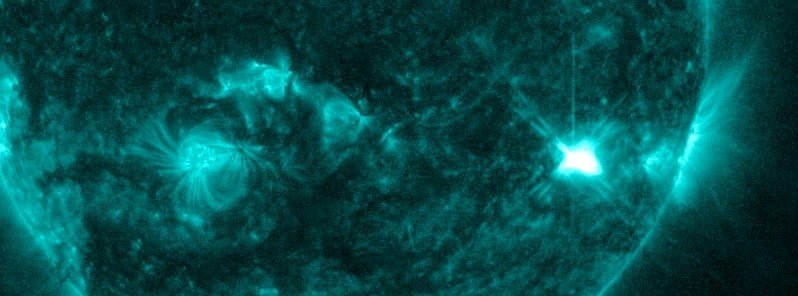
Multiple M- and C-class solar flares were detected on December 14, 2022, with the strongest being M6.2 at 14:42 UTC. While several coronal mass ejections (CMEs) were produced, none of them appears to be Earth-directed.
Solar activity reached moderate levels in 24 hours to 12:30 UTC on December 14, with four M-class flares.1
The largest was an M2.4 at 07:40 UTC from Region 3165 (S20W44, Dso/beta).
Region 3165 also produced an M1.1 flare at 11:59 UTC. There was also an M1.1 at 08:31 UTC and M1.4 at 09:27 UTC from old Region 3153.
A Type II radio sweep (925 km/s) was associated with the M1.1 and CMEs were observed associated with both M1 flares from 3153. None of them were Earth-directed.
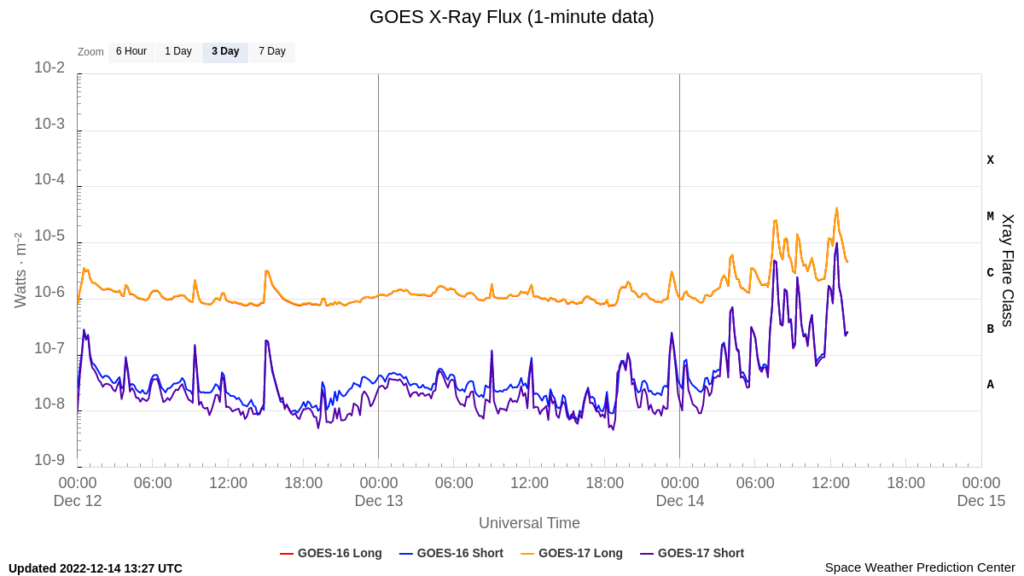
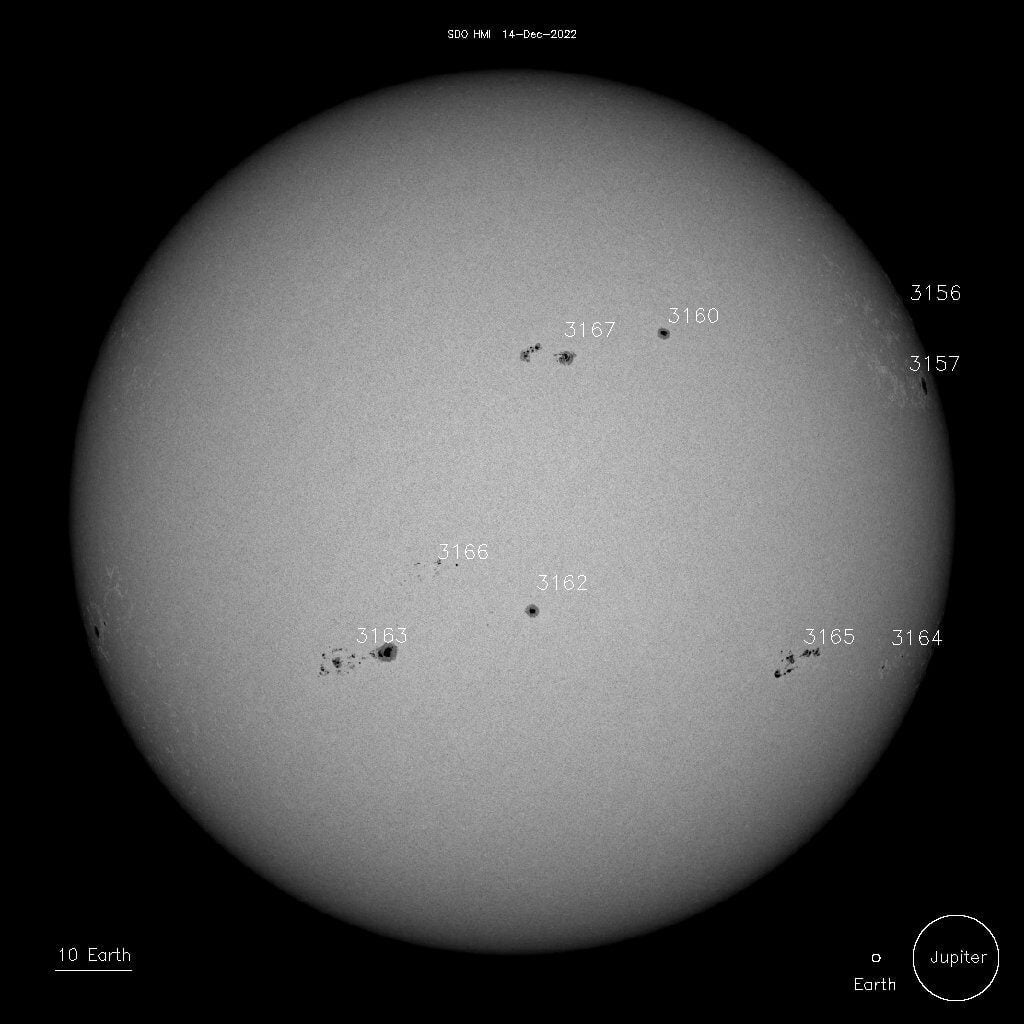
There was an additional CME associated with a filament eruption centered near S40W30. This event was first visible in C2 imagery near 04:30 UTC.
Modeling of this event shows it did not appear to have an Earth-directed component.
At 12:31 UTC, a fifth M-class solar flare — measuring M4.1 — erupted from Region 3165.
The strongest solar flare of the period — M6.2, erupted at 14:42 UTC. The source was also AR 3165. This flare did not have any associated radio sweep signatures, nor was a CME clearly observed in available coronagraph imagery. However, there is some evidence in GOES-SUVI imagery of potentially, weak disruption due to some associated coronal dimming in the area of the source region.2
This event was followed by M3.2 at 14:59 UTC, M2.2 at 17:12 UTC, M1.3 at 20:50 UTC, M2.2 at 20:58 UTC, M1.3 at 21:39, and M4.5 at 22:06 UTC, all from AR 3165.
The total number of M-class flares to 23:59 UTC on December 14 was 12.
Update
A total of 8 M-class flares were registered on December 15, all of them from AR 3165:
- M1.6 at 01:37 UTC
- M2.3 at 07:07 UTC
- M1.0 at 07:58 UTC
- M1.6 at 10:30 UTC
- M1.0 at 16:10 UTC
- M1.1 at 16:44 UTC
- M2.0 at 16:56 UTC
- M5.7 at 22:40 UTC
Numerous M-class flares continued on December 16:
- M3.5 at 02:01 UTC
- M1.2 at 04:59 UTC
- M1.3 at 05:48 UTC
- M1.2 at 06:42 UTC
- M1.6 at 07:38 UTC
- M1.5 at 09:05 UTC
- M1.1 at 09:43 UTC
- M4.0 at 10:19 UTC
- M2.4 at 14:40 UTC
- M1.2 at 15:40 UTC
The total number of M-class solar flares from December 14 to 21:05 UTC on December 16 is 30!
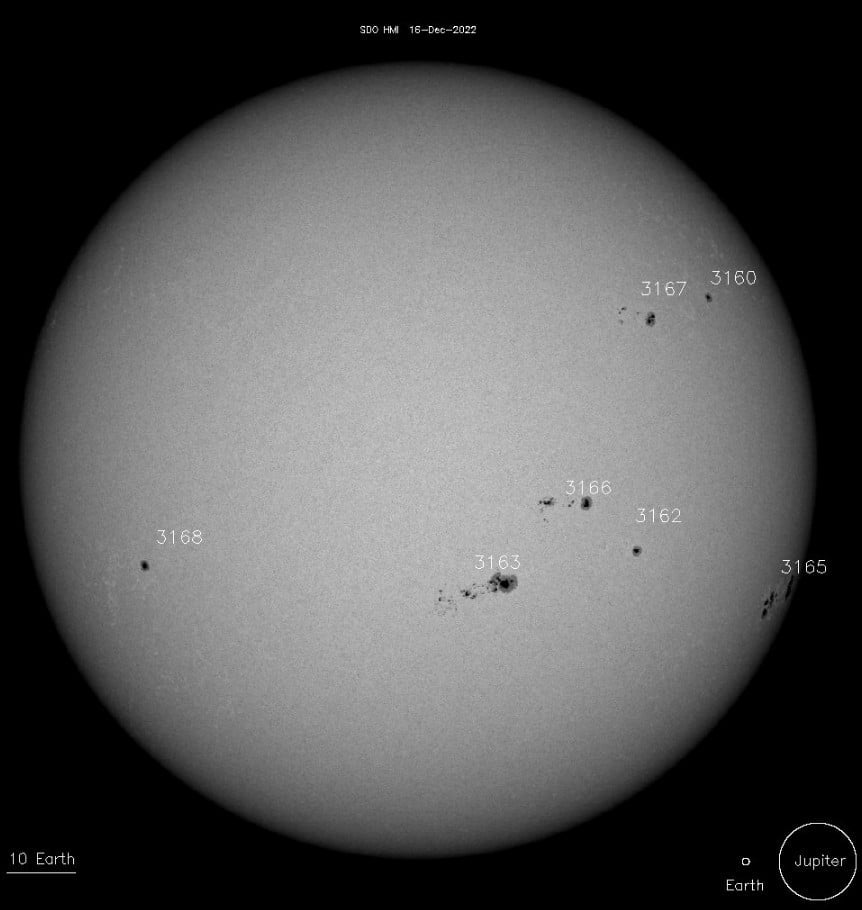
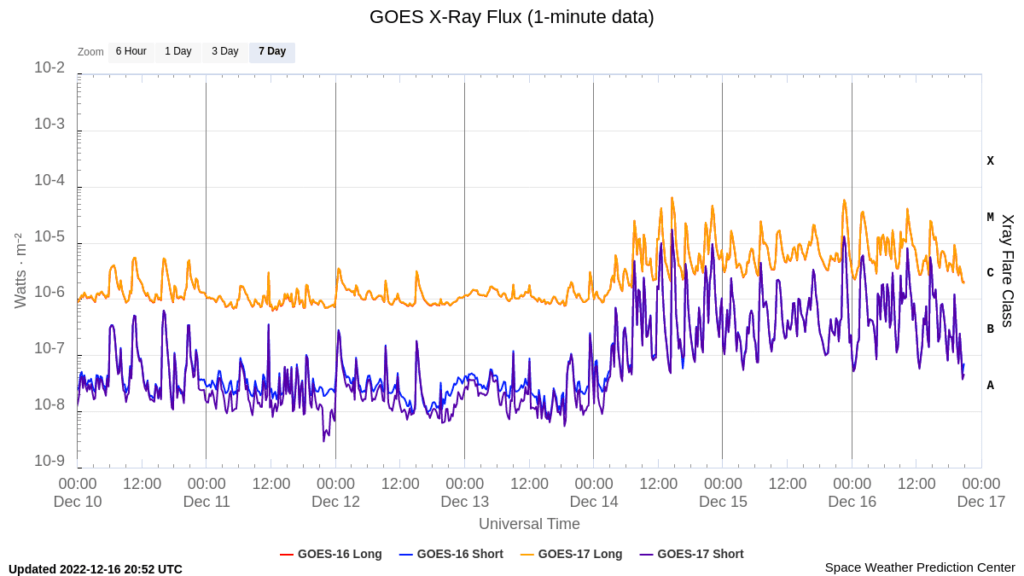
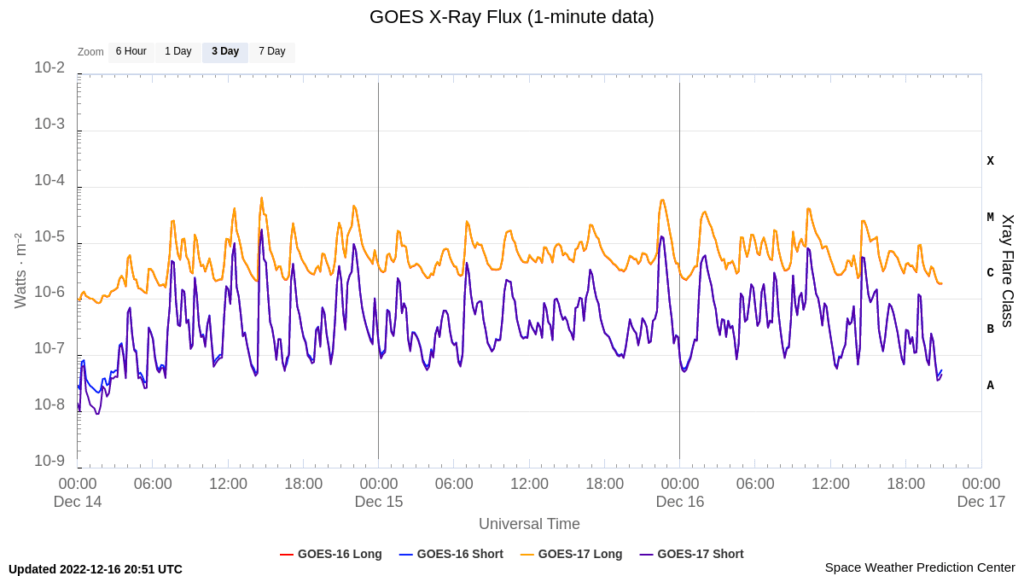
End of update @ 21:05 UTC on December 16
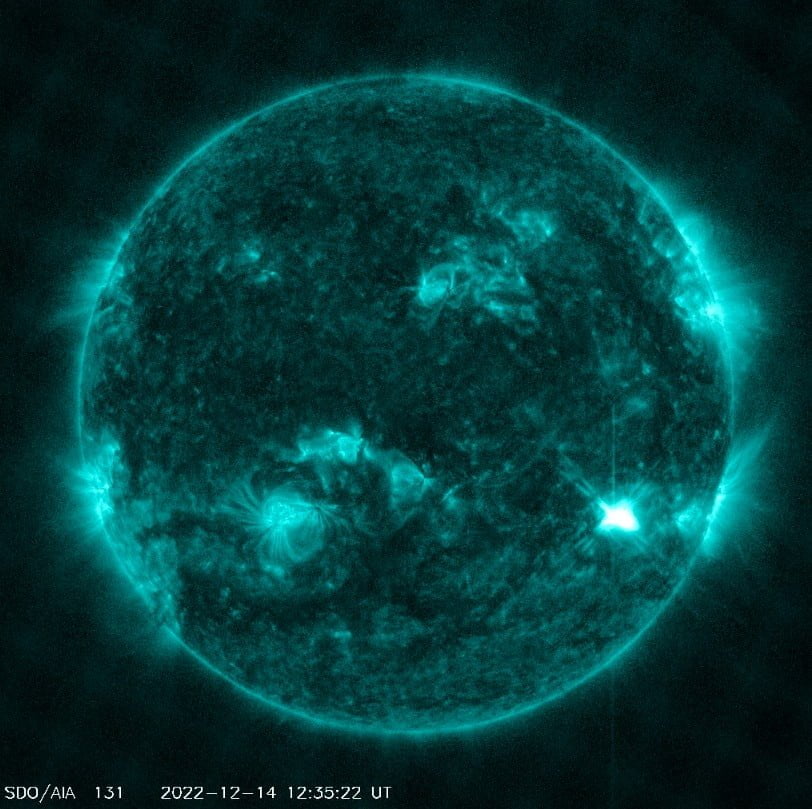
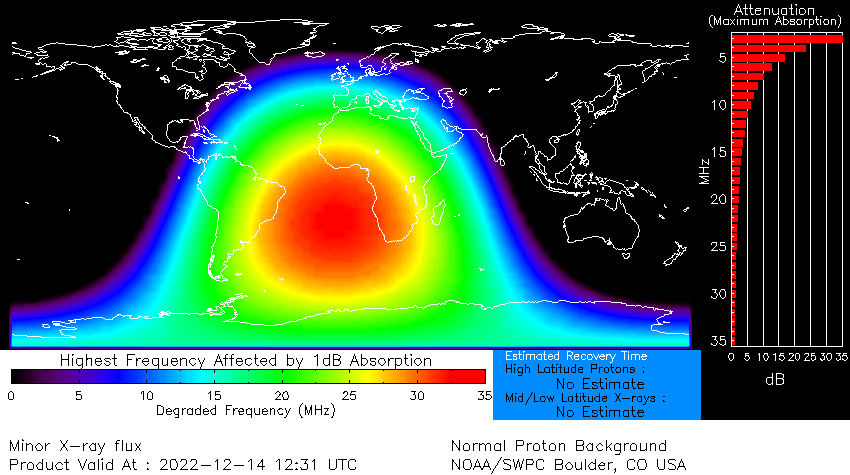
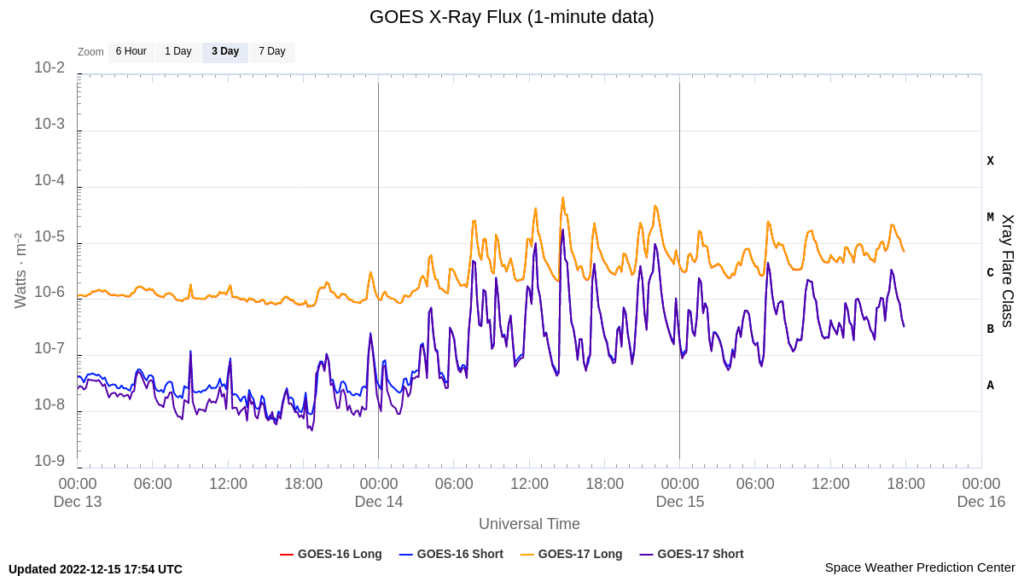
There are currently (December 14) 9 numbered sunspot regions on the Earth side of the Sun.
Region 3163 (S20E22, Eso/beta) exhibited growth during the period and contributed to C-class activity.
Region 3167 (N20W07, Dai/beta) continued to grow and developed intermediate spots.
All remaining regions were little changed or showed some dissipation.
The greater than 2 MeV electron flux remained normal to moderate over the past 24 hours and the greater than 10 MeV proton flux continued at background values.
Solar wind parameters were at nominal levels over the past 24 hours. Total IMF strength was primarily 5 – 6 nT and the Bz component underwent slight deviations. Solar wind speed decreased from 425 km/s to 350 km/s. Phi was negative.
A slow solar wind regime is anticipated to persist through December 16.
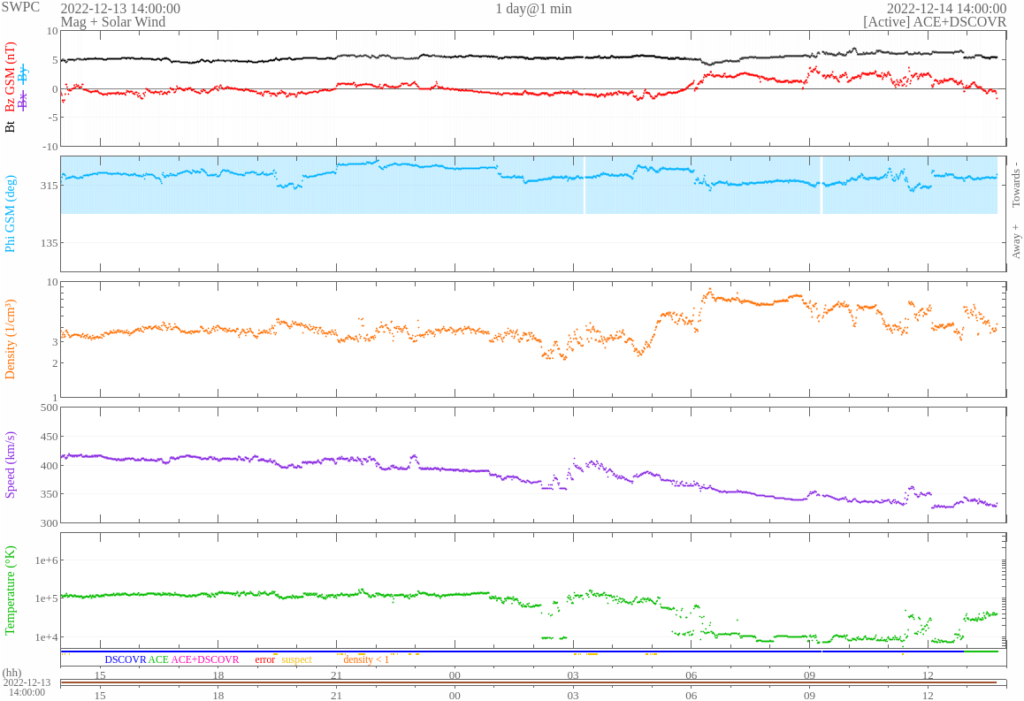
The geomagnetic field was at quiet levels over the past 24 hours and mostly quiet conditions are expected to prevail through December 16.
Moderate solar activity is expected on December 15, with a strong likelihood of additional M1 (R1-Minor) flares and a slight chance of an X-class (R3-Strong) event due primarily to the complexity and recent activity production of Region 3165.
Region 3153 will rotate far enough beyond the limb on December 16 to no longer be a factor and solar activity is likely to decrease, but with a continued likelihood of additional M-class flares and a slight chance of X-class activity on December 16.
Low solar activity, with a good chance of M-class flares and a slight chance of X-class flares, is anticipated on December 17.
References:
1 Forecast Discussion – Prepared by the U.S. Dept. of Commerce, NOAA, Space Weather Prediction Center – Issued: 2022 Dec 14 1230 UTC
2 Forecast Discussion – Prepared by the U.S. Dept. of Commerce, NOAA, Space Weather Prediction Center – Issued: 2022 Dec 15 0030 UTC
Featured image credit: NASA/SDO, The Watchers

Commenting rules and guidelines
We value the thoughts and opinions of our readers and welcome healthy discussions on our website. In order to maintain a respectful and positive community, we ask that all commenters follow these rules.